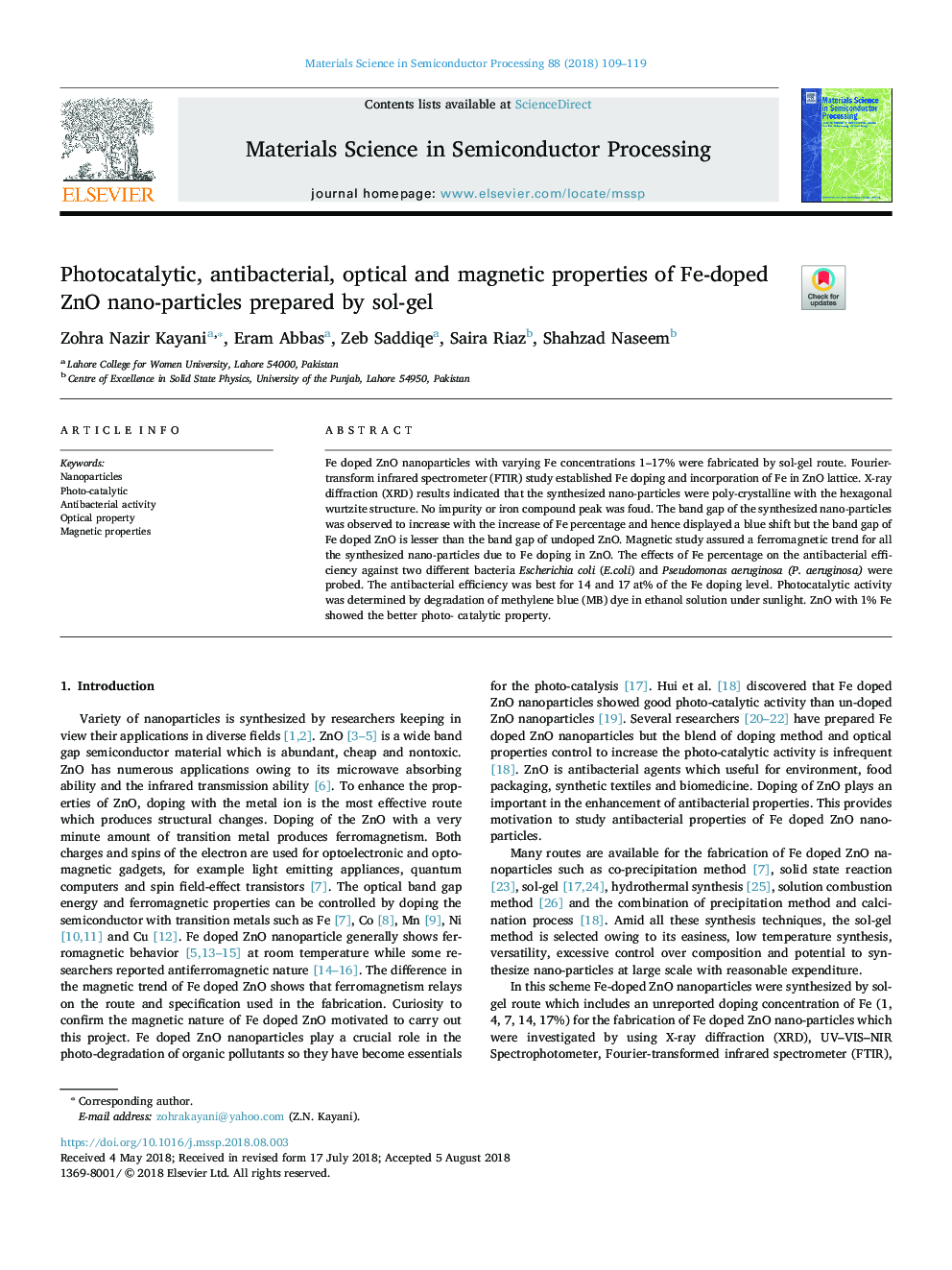| Article ID | Journal | Published Year | Pages | File Type |
|---|---|---|---|---|
| 7117329 | Materials Science in Semiconductor Processing | 2018 | 11 Pages |
Abstract
Fe doped ZnO nanoparticles with varying Fe concentrations 1-17% were fabricated by sol-gel route. Fourier-transform infrared spectrometer (FTIR) study established Fe doping and incorporation of Fe in ZnO lattice. X-ray diffraction (XRD) results indicated that the synthesized nano-particles were poly-crystalline with the hexagonal wurtzite structure. No impurity or iron compound peak was foud. The band gap of the synthesized nano-particles was observed to increase with the increase of Fe percentage and hence displayed a blue shift but the band gap of Fe doped ZnO is lesser than the band gap of undoped ZnO. Magnetic study assured a ferromagnetic trend for all the synthesized nano-particles due to Fe doping in ZnO. The effects of Fe percentage on the antibacterial efficiency against two different bacteria Escherichia coli (E.coli) and Pseudomonas aeruginosa (P. aeruginosa) were probed. The antibacterial efficiency was best for 14 and 17â¯at% of the Fe doping level. Photocatalytic activity was determined by degradation of methylene blue (MB) dye in ethanol solution under sunlight. ZnO with 1% Fe showed the better photo- catalytic property.
Related Topics
Physical Sciences and Engineering
Engineering
Electrical and Electronic Engineering
Authors
Zohra Nazir Kayani, Eram Abbas, Zeb Saddiqe, Saira Riaz, Shahzad Naseem,
